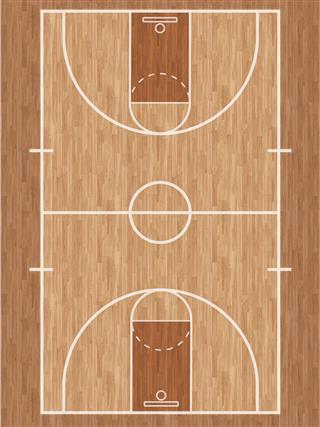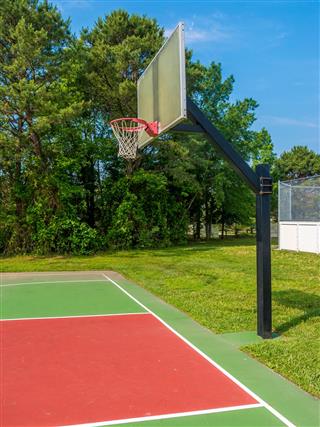
The layout of a basketball court differs slightly from game to game, and the level at which the game is being played. Read on to get a low down on the dimensions and the different areas of the court.
If you ask Earvin ‘Magic’ Johnson about a basketball court layout, he could tell you about it even in the dead of night, in the middle of his sleep. This and similar nuances of the sport are on the fingertips of this legend and those like him. I think that is the stuff legends are made of. Meanwhile, for those who want to know about the game, understanding the layout of the court is necessary.
Dimensions
The Playing Area
The National Basketball Association (NBA) as well as the Women’s National Basketball Association (WNBA) courts measure the same. These measure 94 feet in length and 50 feet in width. While the International Basketball Federation (FIBA) courts are a bit smaller. They measure almost 92 feet in length and the breadth is 49.21 feet. On the contrary, the courts where National Collegiate Athletic Association (NCAA) games are held measure the same as the NBA standard. In high school games, the measurements shrink further.
Height of the Rim
The height of the rim is 10 feet. This is the same for NBA, WNBA, NCAA, and FIBA.
Center Circle
The center circle is a circle in the center of the court, from which the tip off happens. Tip off is similar to kick off in soccer. On this circle, two players contest to get the ball when the referee throws the ball in the air. Once the referee does that, each of the 2 players makes a run for the ball and tries to get it to his teammates. The center circle’s diameter is 12 feet for NBA and 11.81 feet for FIBA. For other levels it is the same as NBA. These measurements do not vary.
Restraining Circle or Restricted Area Arc
This refers to an arc which is at a distance of 4 feet from the basket. Except for NBA, this is not found on other levels. The catch is that barring a few special cases, offensive fouls are not allowed in this area.
Key
Usually, there is a painted area under the basket which is also called the shaded lane or key. For NBA, it measures 16 feet while for the NCAA it is 12 feet. In both these, the distance of the key to the backboard is 15 feet. As far as FIBA is concerned, the key refers to a trapezoid which is 12 feet wide at free throw line and it is 6 meters at the end line. The purpose of this is to prevent players from being beneath the basket for a long time.
Three Point Line
Three point line is a line separating the 2 point area from the 3 point area. Any shot taken successfully beyond this point is counted as 3 points. From the center of the basket, this line measures 19.75 feet for NCAA women and 20.75 for men. The same distance with regards to NBA is 22 feet. Whereas for the WNBA and FIBA it is 20.75 feet.
Low Post Area
The areas closest to the basket, however, is outside the free throw lane. Those low post players who are really skilled at their craft, score lot of points per game without taking a jump shot.
Free Throw Line
This line is around 15 feet from the backboard for the NBA. For FIBA, the distance of the free throw line from the backboard is 15.9 feet. In all others, the distance is the same as NBA, be it outdoor or indoor.
Perimeter
Inside the 3 point line and outside the free throw lane, is the area termed as perimeter. Medium range shots or perimeter shots are taken from this area.
There a few more lines and markings, but, these are best left for the aspiring players and amateurs to see themselves!










